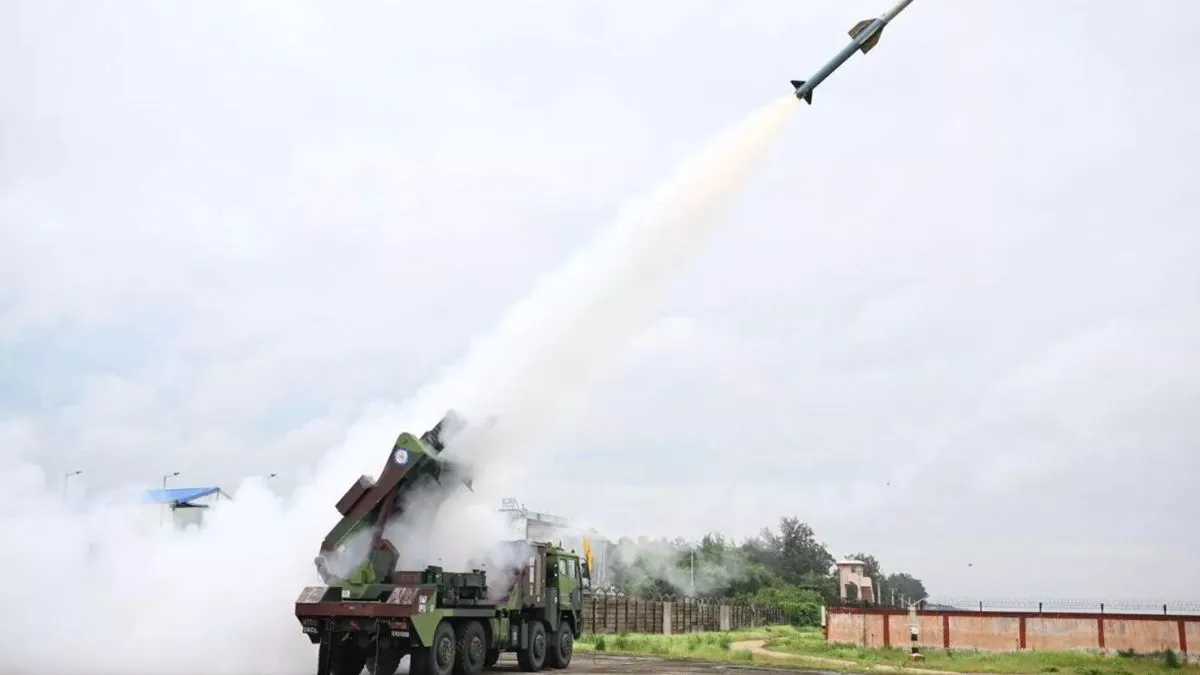- By Supratik Das
- Tue, 26 Aug 2025 12:00 PM (IST)
- Source:JND
India has joined the elite group of nations possessing Directed Energy Weapon (DEW) systems. The Defence Research and Development Organisation (DRDO) has successfully conducted the initial trials of the Integrated Air Defence Weapon System (IADWS) along the coast of Odisha. This achievement places India in the list of only seven nations, along with the United States, Russia, China, the United Kingdom, Germany, and Israel, that have demonstrated this advanced strike capability. China, reacting to India’s milestone, has acknowledged that New Delhi’s success with laser-based air defence is a “remarkable progress” in modern warfare.
What Is DEW System?
A Directed Energy Weapon system is a advanced and high-tech advanced warfare device. It employs focused energy rather than conventional ammunition to destroy or harm enemy targets. DEWs employ high-energy lasers, microwaves, or particle beams to travel at the speed of light, as opposed to explosive warheads.
• High Energy Lasers (HELs): These utilise concentrated light beams to burn or incapacitate aerial threats such as drones, planes, and even missiles.
• High Power Microwaves (HPMs): These can disable electronic systems on a wide front by cooking circuits.
• Particle Beam Weapons: These utilise streams of charged particles to inflict damage but remain largely experimental in nature.
In contrast to traditional missiles, DEWs are quiet, require no reloading beyond a power source, and can be fired several times at an extremely low per-shot cost. They are a game changer in the context of taking on drones, cruise missiles, and swarms.
Just 7 Countries Possess Such Capability
The Ministry of Defence states that the test was carried out on August 23 at the Integrated Test Range, Chandipur. The tests proved the integrated performance of Quick Reaction Surface to Air Missiles (QRSAM), the Very Short Range Air Defence System (VSHORADS) and, most importantly, a high-power laser-based Directed Energy Weapon. The test consisted of targeting three aerial targets in a single operation. Two high-speed remote-controlled aerial vehicles and a multi-copter drone were blasted at varying ranges and heights. Defence officials said that every aspect, from surveillance radars to command and control centers, and destruction systems, operated flawlessly during the exercise. Defence Minister Rajnath Singh hailed the achievement as a "historic validation of India's multi-layered air defence capability."
Through the successful demonstration, India has joined the other seven countries that own DEW technology. Already, the US, Israel, Russia, China, the UK, and Germany have demonstrated such systems, from Israel's Iron Beam to Britain's DragonFire. The inclusion of India is important strategically due to the country's security situation. The system will provide necessary protection against low-cost, fast, and numerous threats like drone swarms and hypersonic missiles.
Strategic Implications For India
• Economical defence: Laser beams are much less expensive than interceptor missiles.
• Quick reaction: Targets can be intercepted at the speed of light.
• Great accuracy: Weather conditions apart, beams are unaffected by gravity or wind.
• Indigenous technology: Created by DRDO research centres such as CHESS and RCI, the system cuts down foreign reliance.
What China Spoke Regarding India's Test?
China, too, has been working on its own DEW platforms like the LW-30 laser "drone killer" system, and it noted India's test. Beijing defence expert Wan Yan'an told Global Times that India's IADWS is "remarkable progress" and is for hitting drones, helicopters, and low-flying planes in a limited range. "There are only a few countries in the world that have deployed combat-ready laser systems," he added. China has positioned itself as a leader in DEW deployment, but its experts’ acknowledgment of India’s capability signals recognition of New Delhi’s rising technological edge.
The first trial of IADWS is based on DRDO's previous ventures such as DURGA-II, the Tri-Netra programme, and the KALI accelerator, which are intended to further solidify the country's DEW arsenal. With increasing drone penetrations along the Line of Control and mounting regional missile threats, these systems will be invaluable in future warfares. India's successful demonstration of DEW not only places it firmly in the international league of sophisticated military nations but also marks a technological leap in the age of modern warfare.

